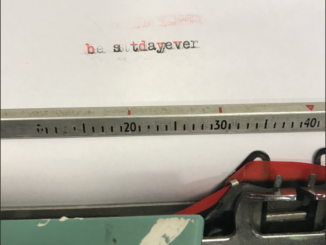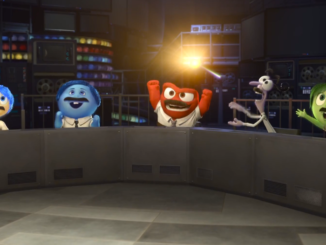I had a kid recently who is not on my caseload. Their teacher asked me offhandedly about something they do, what I would call a stim. In their case, they pick at the skin on their fingernails until the point of bleeding. They’re not distressed by the picking, but they are distressed by the blood.
I, too, pick at the skin on my fingernails. I always have, and I’ve never been able to stop, despite trying everything imaginable to deal with it. Nowadays, I accept it about myself. If I pick too much and make one of my fingers bleed, I wear a band-aid for a few days; if I can tell that it’s coming, I preemptively put a band-aid on it to give it time to heal. I’ve gone to work with three or four fingers band-aided before.
But this child can’t tolerate the feeling of a band-aid against their skin; it’s just as distressing to them as the sight of the blood. Hmm. I asked in a FB group I’m in, for therapists who are affirming of neurodiversity and who are great at recognizing and reframing the negative stories that are told in everyday speech and medical/mental health treatment about autism, ADHD, and other neurodifferences. I got some really great suggestions.
I came back to the teacher and talked with her about it. We got the child a piece of the spiky side of Velcro to try to replace as a stim if they were willing. Today I spoke with the teacher again; the Velcro has become their favorite fidget toy, something they use as a coping mechanism for replacing the picking — not 100%, but it doesn’t need to be 100%; it’s a tool in the arsenal for the child.
For them to live within their own body. For them to find safe ways to meet the needs they have. Even if those aren’t the needs the teacher/parent/therapist has, or the needs they understand. Taking their word for it and finding the personalized tools for them.
I have a handful of kids on my caseload who I’m working with on the same type of thing, just from a different direction. Coping strategies, sensory strategies, yes, but not just as a buzzword or a routine to follow, but as a means of figuring out what’s going on inside their own bodies and meeting that need. (And don’t even get me started on how school systems in general and academia in America is set up in complete opposition to this, no matter how much the individual school is trying not to fall into those patterns…)
But all of this requires a degree of respect for the child as the expert on what’s going on in their own body that the world at large (parents, therapists, teachers — this is everywhere) doesn’t tend to have. I heard someone the other day saying to a child, “Use your [coping mechanism] right now” and when the child protested, their adult snapped back, “This is not a negotiation”. Well, okay. That’s not a coping mechanism. That’s classwork. That’s a demand being placed in addition to whatever was causing the stress, not a relief of it.
I keep coming back to Ross Greene’s, “Kids do well if they can.” I repeat it to myself like a mantra some days. There’s more stress in the world right now on five-year-olds than I’ve ever had to carry in most of my adult life. Kid’s not doing well? Then it’s because they can’t, not because they defiantly don’t want to. In fact, I’m doing my best to erase “defiance” as an interpretation from my mind entirely. I haven’t ever met a child in my life who was better served by that bias from the adults around them.
Heaven knows I’m the chief offender of uncharitable interpretations when it comes to my own children vs the children I work with. This isn’t intended to be preaching, only musing. I guess it just surprises me (but in a good way) how much of parenting is just making myself a better person and watching my kids follow. So much of OT is the same way — learning to regulate myself and reach out and connect to kids who are desperately seeking for someone to connect with. Nobody wants to be doing a bad job and disappointing the adults in their life. Everybody wants to be loved.
Nobody is picking at their skin because they want to get uncomfortable and upset — same with a million other small maladaptive behaviors that humans of all ages engage in. So if it’s not hurting (flapping your arms, spinning in circles, listening to the same song for the 30th time in a row, taking an extra nap, having a good cry) then go for it. And if it is hurting too much, then let’s see what tools we can come up with to replace it when it gets bad. It helps if they’re as close to what feels instinctually right as possible, like the prickles on a piece of Velcro.



